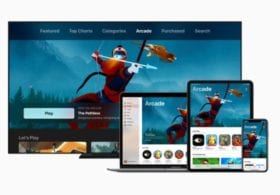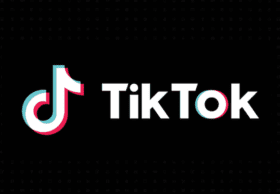| CYNOPSIS Live from CES
Digital Hollywood set a strong pregame tone, MediaLink’s kickoff party brought brand A-listers to Encore’s XS nightclub and Samsung Electronics imagined the Age of Experience in its opening keynote. It’s Tuesday, January 7, 2020 and this is your first dedicated Cynopsis dispatch from the Consumer Electronics Show.
With the streaming wars heating up and the push to deliver contextual content and advertising in full swing, the symbiosis between entertainment and tech has never been more heightened. That’s translated to a greater media presence in Las Vegas than ever before. Among the key connectors is 5G wireless tech, which is now really a thing—bye bye buffering—with its ability to deliver data 20x faster than 4G rendering it a streamer’s dream.
|
 |
 |
 |
| IN THE NEWS
This is the dawning of the Age of Experience. Samsung Electronics officially kicked off CES last night with a keynote from pres/CES Hyun-Suk Kim, who delivered the company’s view of a near future where wearables aid in at-home physical therapy, kitchen appliances suggest wine pairings and kids’ parties are enhanced by holographic dinosaurs. Kim was joined on stage with a prototype of Samsung’s camera-equipped, machine-learning, roly-poly yellow robot Ballie, which begged an overriding question at this year’s CES: Cool or creepy? As if he could read our minds, Kim concluded with a promise: “Trust is the foundation of user experience. Samsung will never share data with third parties without direct and prior consent from you,” he said, adding, “We will fully ensure transparent data management.”
An invite to MediaLink’s annual kickoff party is among the most coveted at CES. DJ duo Icona Pop kept the room pulsing at this year’s soiree, where brand, agency and finance execs mixed and mingled. One big low-tech takeaway from the event? The spork – that connected combo of spoon and fork – is back. Based on the crowd of taste-makers in attendance using said dining utensil, we’re predicting a big spork renaissance in 2020.
DIGITAL HOLLYWOOD
As if we needed more proof it’s getting downright Hades-like in the streaming-sphere, “Disney is starting to limit advertising on their stations from Netflix. You’ll start to see a new landscape developing here,” said Peg Jackson, managing director, global technology group, at Stifel Investment Banking. Jackson said $380 billion, or 52 percent of total ad spend worldwide, is currently spent in digital, noting, “Mostly all growth going forward is in digital ad spend.”
5G is out in full splendor at CES, and was the only tech that came up during the digital Hollywood panels. “Speed, bandwidth, the amount of content you can get to any device quickly – downloading a movie in a minute – that’s a game changer,” said Larry Allen, VP of ad product strategy, WarnerMedia Ad Sales. “Also, the connected devices outside of the home that are 5G-enabled creates a new kind of ecosystem that’s now fully wireless. We’re only scratching the surface.”
In an increasingly fragmented market, content discovery remains a factor. Nielsen SVP, advanced advertising Jason Bolles noted, “That’s so important for the platform. If you can’t get someone interested in the platform and stick with it, you’re not going to last.”
Not your father’s fragmentation. Samantha Cooper, EVP of partnerships, distribution & business development at ViacomCBS, invited the industry to engage in some magical thinking. “The word feels very negative, but if you look at IP today, there are deep immersions within franchises. We’re actively buying live events – we bought VidCon, Clusterfest – and we do a ton with social. I would argue the emotional two-way connections within particular franchises is much ore meaningful to consumers than everyone tuning in at 9pm… Viacom has invested hundreds of millions of dollars to create bespoke content specially for social platforms.”
Here’s how a few key players are capitalizing by differentiating…
Short-form content plays a pivotal role in the Fandango ecosystem, said Mark Young, SVP global strategy and business development at the company. “We have 51 million subscribers on YouTube, and [we have] big consumption of promotional trailers and licensed content. Think of it as Spotify for video – best car crashes, kiss scenes. It opens a funnel and becomes a really important piece of the puzzle. We’ve started to syndicate content out to Facebook Watch, and we’ve got a new show in development for Quibi.”
At Fox, live content across sports, entertainment and news is ruling the roost. “As a company, we made a clear strategic decision that live still matters,” said David Borstein, VP, digital Entertainment, Ad Sales, Fox Entertainment, citing the breakout success of the net’s The Masked Singer.
Tina Pukonen, Pinterest head of entertainment strategy, says the platform’s The Board activation powered by Elizabeth Banks around the Charlie’s Angels premiere was a key aha moment. Look for more to come. “Users want to know the story behind the story. We talked to Sony and they shared Elizabeth is a huge Pinterest user personally and professionally. And so she shared how she had planned a lot of the movie – location, looks, costumes – using Pinterest.”
|
 |
 |
 |
| EXCLUSIVE INTERVIEW: JEREMY HELFAND, HULU
Those looking to innovate in the connected advertising space (and who isn’t?) would be wise to tune into what’s happening at Hulu, which in recent months has rolled out new pause ad and binge ad formats. Cynopsis caught up with Jeremy Helfand, VP/head of ad platforms, for a deep dive on Hulu’s consumer-first ethos and the tech that’s driving these innovations.
What are the goals of the new ad formats?
JH: We’ve seen the fundamental change in how content is consumed by viewers of television. Television advertising has not kept up with that change, and so we believe strongly there is a better ad model that exists that takes into consideration the change in how consumption has evolved. We call that viewer-first advertising. The belief that advertising should be consistent, it should be relevant and it should be integrated. Part of that approach is looking at the different types of formats that speak to the viewer in a less disruptive way than the way traditional advertising has occurred in TV. We’re focused on how do we minimize the disruption while the viewer is enjoying their viewing experience and at the same time find more effective ways to connect advertisers and brands with the viewers they seek.
Let’s talk about the pause ads, which Hulu beta’d with Charmin and Coca-Cola, and is now in general availability across the service.
JH: The pause ad is one really good example of where we were able to demonstrate we can deliver a better experience for the viewer and deliver a higher return on investment for the advertiser. What happens is when a viewer pauses on the content, so it’s a natural break in story-telling, if they’re not going to pause in order to go forward or backward but really they’re taking a break, an advertisement shows up in a translucent on top of the content and persists on the screen until they return and press play again. We launched the beta with Charmin and Coca-Cola, and the results from the beta were really strong. We showed a 68 percent increase in ad lift and brand lift with the pause ad, which is about 5X the benchmark.
Are there other early learnings from the pause ad launch?
JH: We received feedback from our viewers that they associated the innovation of the pause ad with the innovation of the advertisement, so they said the brand was doing innovative, new things and that was something that was really a great byproduct of an advertiser participating. We did a lot of user testing as part of the launch of the pause ad—understanding a static image with a great visual vs. a video was a much more effective way to communicate a brand message, and making sure the content stayed behind the ad so it appeared the content was still there so the advertiser wasn’t taking you away from the content. There were all these little nuances that went into the development of the format that really satisfied the needs of the viewer and didn’t disrupt them.
Hulu introduced a binge ad format in mid-December. It’s early days, how’s that going?
JH: We’re using data science to anticipate who are binge users – someone who will sit down and watch three or more episodes at a time – based on user behavior, the type of content it is, the time of day, the environment they are in. We are still learning what are the variables that determine a binge session. The reason that’s important is that if you can anticipate who’s going to binge, then from the very first episode you can start to message the consumer that a brand is going to be part of the experience with you, and then when you get to the third episode you’re either going to have a commercial-free episode brought to you by that brand or the brand is going to have some sort of reward for you having entered the binge mode.
What are plans for the next phase?
JH: The exclusive launch agency is Publicis Media, and the three brands they are using as part of the initial launch are Cheez-It Snap’d, a new snack product that’s great for binging, Maker’s Mark, and Sparkle paper towels. We will continue to be working with more of their brands in the second launch phase in February, and then we’ll open it up as we did with the pause ads across the entire advertiser base most likely in second half of 2020.
What other kinds of ad formats are on Hulu’s radar?
JH: There are three swim lanes we are working on. One is experiences. We’re also focused on automaton of advertising; we believe increasingly the amount of streaming television advertising will be transacted through automation. And then the third swim lane is around data and measurement. Things like attribution and optimization. With experiences, we talked about binge and pause, those are what we call situational formats. Fifty percent of ad-supported content hours consumed on Hulu are watched in a binge scenario, so it’s a significant portion of our audience, and transactional is another one of those themes. Streaming television has to be a full-funnel media when it comes to advertising. We’re hearing a lot about direct to consumer advertising, and where direct to consumer historically has used channels like social they’re now looking to use things like streaming TV to achieve those same objectives. All advertisers are looking for these results. Transactional is one area where we’re spending a lot of time as well. It’s not just about creative messaging, but also using technology to minimize disruption of the experience the consumer is having with the storytelling. You can expect to see more from us on this in the second half of 2020.
|
 |
 |
 |
| MORE ON ADVERTISING & BRANDS
Among the big ponderings at this year’s show: What exactly is an ad, and what constitutes an influencer, in today’s ecosystem. The consensus is, call them anything but an influencer in 2020.
“The special sauce isn’t that special – it’s authenticity. Through that authenticity you build a partnership that matters,” said Angela Turner, SVP, affiliate and consumer marketing, at Revolt Media. Revolt this month will launch in-depth study Generation Hip Hop, which dives into the genre’s influence across verticals ranging from fashion to food to travel.
“For us, brand love has been a big priority – making sure we’re thinking about that consumer-first approach, making sure we’re treating you with the respect you deserve,” said Kate Brady, head of media innovation & partnership development, PepsiCo.
Transactional content is having a moment. WarnerMedia was among the parcel of companies – including A+E Nets, Crown Media and NBCU – that announced a partnership with TheTake, developer of scalable video commerce tech, to provide shoppable entertainment content. The company’s Larry Allen noted, “From a control perspective, we’re introducing commerce into programming. So a consumer on an LG TV can ask, In this scene what are the shoppable elements I can purchase?” Biggest challenge, he said, is rights. “We have to negotiate to get rights. Today I can never alter an episode of Friends, I can’t put a coke bottle on the table. The technology is there, the rights are tricky.”
The ad production model is evolving, too. “A lot of brands we talk to are bypassing the usual creative process and jumping across the ad agency and working directly with production companies,” said Simon Kelly, co-CEO and chief enthusiasm officer (cool title alert) at Story Worldwide, “probably because there’s an inherent discord between the production companies and the agencies. Brands we talk to want to work more directly with production companies.” Story WW is adopting the Hollywood showrunner model, he said, where a “story runner” creates and pilots a concept.
SCENE + HEARD AT CES
Content discovery “is really going to voice in the TV world and it’s a frickin’ nightmare. Between Comcast, Cox, name the cable box – they all have a different metadata strategy.” – Ira Rubenbstein, chief digital and marketing officer, PBS
“We made a decision as a company to not partner with Facebook around its Watch platform because we thought the viewing experience was challenging, not easy to find and difficult to navigate.” – Pamela Drucker Mann, global chief revenue officer, Conde Nast
“My college-age daughter doesn’t know what networks are, She knows what shows are.” – Matt Smith, exec director, business development & strategy, Comcast Technology Solutions
Vegas doesn’t sleep, and neither does Cynopsis when we’re covering CES for you. If you have news to share, please hit me up at [email protected].
Cheers,
Cathy Applefeld Olson
|
 |
 |
 |
|




